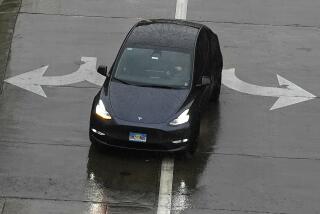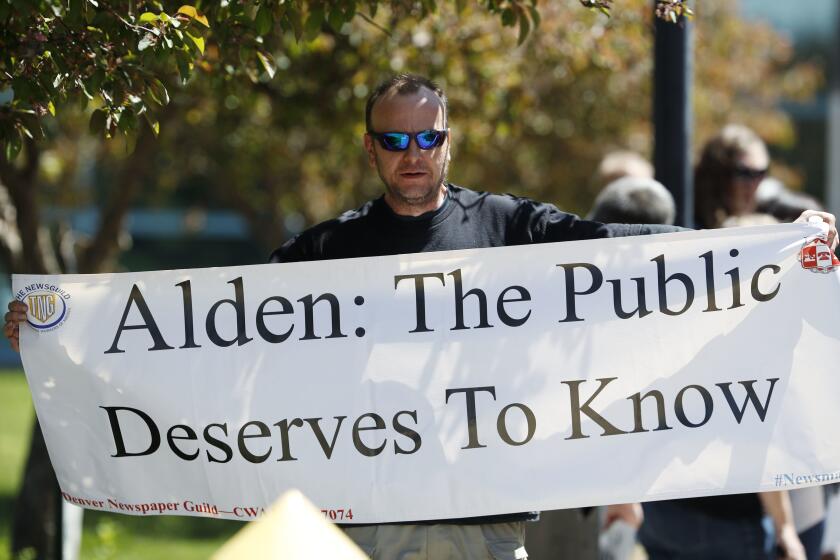After Tesla Model 3 unveiling, Elon Musk faces big challenges to deliver cars
A day after its glitzy Model 3 unveiling in front of hundreds of fans, Tesla Motors Inc. will now have to turn its attention to its most pressing concern: how to deliver these cars to customers on time.
It’s a problem Tesla has struggled with before.
Its most recent vehicle, the “falcon-wing” Model X SUV, was delivered to customers in late 2015 after it was expected to arrive in early to mid-2014.
See more of our top stories on Facebook >>
The trouble was blamed on design difficulties with the doors, which open straight away and up from the vehicle. (Most of the industry refers to these as “gull-wing” doors but, hey, that’s Tesla.)
“Prior history might be an indicator of what might happen in the future,” said Jack Nerad, executive editorial director and market analyst for Kelley Blue Book.
Read on to learn more about the challenges Tesla will face with its newest model.
Production delays
Company Chief Executive Elon Musk claims that, compared to past vehicle delivery disappointments, the Model 3 will be different.
At the car unveiling Thursday night, Musk got a big laugh from the audience when he said he felt “fairly confident” that the electric vehicle would be delivered next year.
On Friday morning, he tweeted that pre-orders for the Model 3 had reached 180,000. He followed that tweet up with another, saying he was “definitely going to need to rethink production planning.”
“They’re acutely aware of the delays they’ve had before,” said Eric Lyman, vice president of industry insights at TrueCar.
SIGN UP for the free California Inc. business newsletter >>
“I think when you’re acutely aware of something, especially as a publicly traded company, you have a responsibility to be straightforward with the expectations going forward of future products and ultimately things that will impact the bottom line for your business and your shareholders.”
To cut down on potential product delays, analysts said the Model 3 would likely have a more simple design and features.
“If they have less bells and whistles, which they probably will, the production should be a bit easier from that standpoint,” said Jessica Caldwell, senior analyst at Edmunds.com. “They’re producing a higher number [of vehicles], but the complexity of production would be less.”
But the mass market Tesla is targeting with the Model 3 is very different from the niche, luxury customers it attracted with the higher-end Model S sedan and Model X SUV.
“The mass market is not as tolerant of delays in product,” Lyman said. “Part of the appeal of a luxury good is the exclusivity, and if slim production or lack of availability is positively correlated with exclusivity ... then a delay in that type of market would not be as impactful.”
Competitors with a quicker time frame
One looming challenger is the Chevy Bolt, which is expected to be on the market by the end of 2016. The plug-in electric vehicle will have a price tag of about $37,500 and a 200-mile range.
Other automakers, such as Mercedes-Benz and BMW, also are working on new electric vehicles.
Nerad of Kelley Blue Book said some antsy buyers could decide to switch to another maker if Tesla takes too long.
But conventional automakers with electric vehicles also will be able to compete through the sheer number of dealerships and their retail power.
“The key ingredient for a broad-line manufacturer is they can sell and probably will sell EVs [electric vehicles] at a loss,” he said. “I think Tesla Motors can’t continue to operate at a loss forever. This is when they’re really supposed to become much more than a niche player in the industry.”
Disappearing electric vehicle rebates
California recently disallowed electric vehicle rebates for wealthy customers, and some state and federal rebates are set to expire after the manufacturer sells 200,000 individual cars.
According to data compiled by the research firm Polk and by the industry publication Inside Evs, Tesla to date has sold about 67,000 vehicles that qualified for rebates. If the company hits its stated sales target of 80,000 to 90,000 vehicles this year, analysts said, those rebates could expire before the first Model 3 leaves the factory floor.
“A good number of these individuals are not going to get that tax rebate,” Lyman said. “Just the sheer math won’t allow it. That’s another tricky thing that Tesla’s going to have to negotiate.”
Times staff writer Charles Fleming contributed to this report.
For more business news, follow @smasunaga.
ALSO
On campuses across the country, students are standing up for Donald Trump
Elon Musk says Tesla Model 3 pre-orders hit 180,000, but can he deliver?
One of the LAPD’s preferred weapons to help officers avoid shootings often doesn’t work
More to Read
Inside the business of entertainment
The Wide Shot brings you news, analysis and insights on everything from streaming wars to production — and what it all means for the future.
You may occasionally receive promotional content from the Los Angeles Times.










